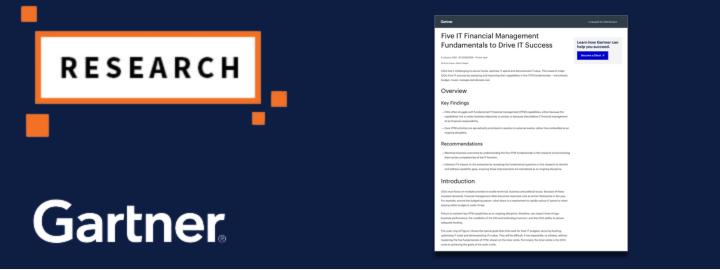Why AI Spend Must Be Governed Now – Not Later

Understanding the Upfront Cost Curve of AI
Why Financial Visibility is Non-Negotiable
AI spend doesn’t behave like traditional IT. Most costs accumulate before value is realised, often during the compute-heavy training phase. In fact, as discussed in our newest webinar, up to 90% of an AI project’s compute cost can occur before it reaches production. Without strong cost visibility from the outset, organisations risk underestimating total exposure.
Serverless models seem appealing for their flexibility, yet they introduce transactional complexity. Billing based on usage can create unpredictable cost spikes—particularly when workloads scale rapidly. If AI spending is not tied directly to measurable business outcomes, ROI becomes nearly impossible to track.
This is where FinOps plays a critical role. It enables teams to map AI expenses against real-time consumption and outcomes—driving accountability across IT and finance.
See how MagicOrange surfaces true AI spend with intelligent allocation models—so you can tie every cost to business outcomes. Explore our Applied AI capabilities
Infrastructure, Talent and the Real TCO of AI
It’s More Than Just Compute Costs
Choosing cloud over on-prem infrastructure brings agility—but at a financial trade-off. AI’s unique needs for high-performance compute and storage can quickly turn a flexible setup into an expensive one. The shift from capital expenditure (CapEx) to operating expenditure (OpEx) requires a new financial lens.
Labour compounds this challenge. The demand for AI talent has outstripped supply, and skilled practitioners come at a premium. The cost of building and managing AI doesn’t stop with the infrastructure—it’s carried forward through high salaries, specialised skills and ongoing optimisation work.
Total Cost of Ownership (TCO) models must reflect these evolving dynamics. Traditional financial plans won’t capture the front-loaded nature of AI, where most spend happens before production. That’s why ITFM teams must recalibrate financial models to include early-stage spikes alongside long-term maintenance and scaling costs.
See how MagicOrange helps teams benchmark and control IT spend—including AI workloads and shared services. Explore our Financial Management capabilities

Expert Insights from Janine Pickard-green
Janine Pickard-Green has spent the past decade in IT Finance, specializing in FinOps, IT Financial Management, and Cloud Cost Optimization.
She has led cloud financial management solutions for top financial services and retail enterprises, focusing on cost allocation, budgeting, and forecasting.
As an active member of the FinOps Foundation, Janine has contributed to the FinOps for AI working group, the FOCUS initiative, and cost allocation methodologies, helping organizations enhance financial visibility and accountability.
Demonstrating AI’s Value with Meaningful Metrics
New KPIs for a New Class of Workload
As we discussed during the webinar, allocating AI costs isn’t straightforward. AI platforms often rely on shared infrastructure, with multiple teams drawing from the same compute pools. This makes it difficult to assign expenses cleanly by department or use case.
To make sense of AI spending, organisations need new metrics. Standard cloud KPIs don’t capture the right signals. Instead, metrics like token usage, inference volume and training run duration help establish financial accountability. These need to be tracked at a granular level to show where costs originate—and how they evolve over time.
Financial models must also include sustainability measures. GPU-intensive workloads consume considerable energy, and stakeholders increasingly expect AI efforts to align with corporate responsibility goals. AI success is no longer just technical—it’s financial, ethical and environmental.
See how MagicOrange connects to the systems that matter most—so you can track, allocate, and explain every AI dollar with confidence. Explore our Data Integrations
Final Thought – AI Cost Governance is a Strategic Necessity
The AI revolution is underway—but without financial guardrails, it won’t scale sustainably. As we highlighted in both our whitepaper and live discussion, FinOps teams must treat AI like a strategic investment, not a black box.
Managing AI costs isn’t just about saving money. It’s about proving value, building trust, and enabling transformation without losing financial control.
Missed the full paper?
Download Optimising AI Costs: A FinOps Approach for Sustainable AI Adoption
Or watch the on-demand webinar on BrightTalk
Want To Learn More? Let’s Start A Conversation.


